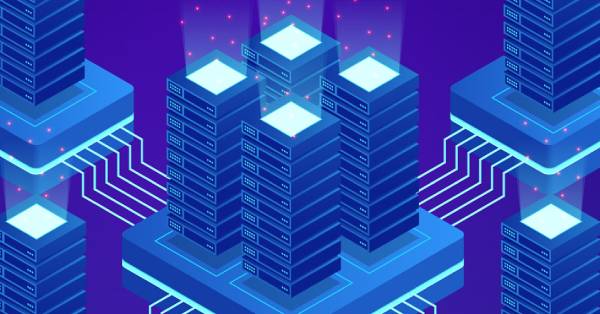Insights
Shifts in Human Behavior 2021
February 10, 2021
In this video, Karen McCauley, Founder, Fresh Squeezed Ideas, and Kristian Gravelle, VP Marketing and Digital Transformation Lead, Zelusit Corporation discuss how human behavior is changing in the context of technology and data and what this means for organizations.
COVID-19 has undoubtedly accelerated the relationship people have with technology, and through the lens of strategic foresight, Karen evaluates three emerging and intersecting macro trends with insightful examples of organizations that are ahead in the game:
Trend 1: Tech Acceptance
The past year has seen an acceleration of digitalization in supply chains, customer interactions, and internal operations of organizations by at least three to four years. Companies have been able to adopt digital solutions faster and expect them to last long beyond the current situation, consequently, making investments to ensure these changes will stick. Businesses that have been the most successful in responding to the COVID crisis are the ones that have increased technology and technology capabilities, filling talent gaps, and moving quickly to experiment and innovate.
The pace and success of these technology changes raises the obvious question of what barriers had been hindering them previously. Organizations have claimed that these barriers mostly pertained to fear of customers’ resistance to change, fear of a shock to established ways of working, insufficient IT infrastructure, and organizational siloes. However, the speed of technology change adoption has revealed that the single greatest barrier was not seeing technology change as a top business priority. Moving forward, digital and corporate strategies will increasingly be seen as same.
Concerns about tech backlash, while not altogether immaterial, are somewhat allayed by the fact that 52% of consumers say technology plays a prominent role in almost every aspect of their day-to-day lives. While people do not oppose technology, they do oppose feeling like they do not have transparency, control, and ownership over something that is now an integral part of their lives. These factors are quickly becoming the price of entry, and companies not meeting these demands will face increasing wariness, mistrust, and concern from their customers.
Trend 2: Data Sharing and Security
In the face of the pandemic, Governments and organizations have leveraged sophisticated tracking technology to monitor the virus spread while gaining unfettered access to people’s data at scale.
Yet, this recent embracing of tools, from video conferencing to chat apps does not necessarily reflect a desired shift to more shared data. While previously, data sharing could be opt-in, now it is no longer a choice. This is an opportunity for companies to help people feel comfortable and supported in this transition, while demonstrating that user data can provide them with value by clarifying how the “data for benefit” exchange really works.
While COVID has accelerated data sharing, it has also amplified concerns about data security. In the coming years, as people lead increasingly online lives, there will be a growing realization that their data is a deeply intimate and personal form of identity. Companies have long understood that data is currency, and now people will recognize this about their own data, resulting in heightened expectations of how companies manage, protect, and provide meaningful returns for shared data. Data leaks will represent a complete breach of trust between companies and users, prompting organizations to have strong cloud, data security, and governance policies in place.
Transparent data security will become table stakes, and companies that provide data empowerment, allowing people the ability to take control of their data, will come out on top.
Trend 3: Collaborative Tech and Warm Data
Frictionless services do not always leave room for moments of human touch, and instead provide a “one size fits all” experience. Technology will increasingly need to recognize this and facilitate a balance between automation and human touch. Conscious consumerism is one of the fastest growing trends, and brands that acknowledge and actively demonstrate their values and humanity will gain loyal customers.
As the volume of data grows exponentially, people are interested in meaningful, warm data, rather than more cold data. Cold data creates assumptions that do not match the complexity of a situation and fails to capture the totality of a person’s subjective experience. On the other hand, warm data provides data in a holistic context, describing relationships rather than individual data points, and allows people to respond to patterns with broader comprehension. Organizations that provide contextual information to help people understand and use their own data will add significant value for customers.
Previously, purchasing a product meant buying a finished form, but now people are able to buy products that are in forever-beta stage, where consumers and technology creators co-create in real-time. Fitness watch application user communities, for example, vote and provide real-time feedback determining which features are developed. Designing a product while it is already in use means companies can benefit from ongoing feedback to provide rich customer experiences. However, this also demands ongoing conversations about what information and involvement consumers are willing to freely give, and ways in which that data might be used in the future.
How Do Trends in Human Behavior, Data, and Technology Come Together?
Implementing technology for technology’s sake will not help drive business, however, as organization’s commercial teams look to capitalize on trends in human behavior, they will need tools and data to be able to grasp those opportunities. It becomes essential for the commercial and technology side of businesses to communicate, come together, and really think about what they are trying to solve for, and how they are going to create value in the future.
The first step towards this is to create the infrastructure or data estate that is fit for purpose. Modern architecture should be in a constantly evolving, forever-beta, state, so a plan needs to be in place for what that infrastructure will look like. While cloud is going to be a part of the overall architecture, it is not the end destination. The architecture needs to be built for the organization’s use cases and needs to continuously adapt as new human trends emerge and the business evolves to create new connections with customers. As use cases change and new ones take their place, having an inductive architecture will ensure that an organization maximizes the value derived from its resources while reducing the strain on IT functions.
As organizations leverage and share data across the company, it becomes essential that the data remains stable, consumable, predictable, and reusable. While previously, data use was limited to a small number of actors within the organization, it is now pervasive, and the old adage of “garbage in, garbage out” has been replaced by “garbage in, garbage everywhere.” In order to create warm, meaningful customer interactions and enhance partner and customer experience, it is important that organizations have the right tools and an organizational governance program to ensure that the data continues to be clean, accurate, usable, and trusted. As data changes, the data governance practice needs to evolve as well, and it needs to ensure security and trust, so customers can appreciate what organizations are trying to do with their information.
However, every organization is at a different point of their data journey. As organizations try to solve for trends in consumer behavior and their interaction with data and technology, they need to invest in the core foundational elements – a modern data estate, data governance, business intelligence (BI), AI and machine learning, and digital solutions, to accelerate the value creation from data to enhance customer experiences, relationships with suppliers, service delivery, and other aspects of their business.


